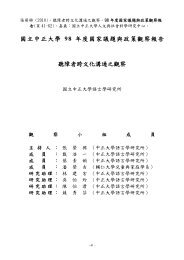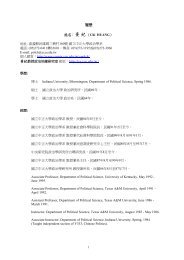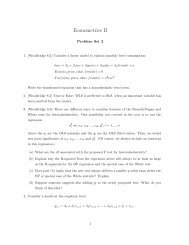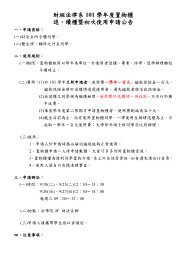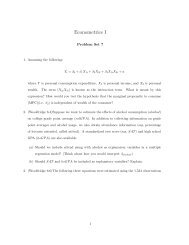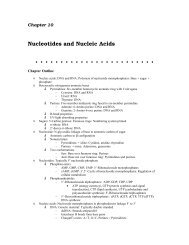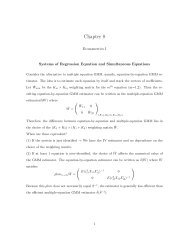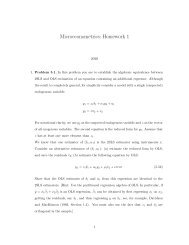Slides
Slides
Slides
Create successful ePaper yourself
Turn your PDF publications into a flip-book with our unique Google optimized e-Paper software.
Table 7. Number of verbs occurring in negative sentences, in sentences with verb<br />
complements and in [V V] compounds*<br />
Subject # of verbs # of verbs # of verbs # of verbs # and<br />
(types, (types) (types) (types) percentage<br />
including occurring occurring as occurring as V2 of verbs<br />
adjectives) in negative complements in [V1 V2] (types)<br />
utterances to matrix verbs compounds, (# occurring as<br />
(including of those V2 argument of<br />
existential, which also other<br />
modal and occurred as operator<br />
aspectual<br />
verbs)<br />
independent<br />
predicates)<br />
AJR 134 24 28 18 (13) 61 (45.5%)<br />
LSY 170 52 25 29 (20) 87 (51.2%)<br />
*Examples of different types of sentences are as follows: negative utterance: buyao (not want),<br />
meiyou qu (not go); verb complements: hui hua (can draw), yao mama lai (want mommy<br />
come), you wenzi guo (exist mosquito pass) , qu wan (go play); [V V] compounds in which<br />
the second verb was also used independently: qie-kai (cut-open); na-xialai (take-down),<br />
da-po (beat-broken).<br />
The data show clearly that both children used verbs as a semantic argument of the<br />
negator, existential, modal and aspectual verbs, as well as other matrix verbs.<br />
3.3 The feasibility of distributional bootstrapping for verbs (Cai 2006, Xiao, Cai<br />
and Lee 2006)<br />
We analyzed adult input to the two Mandarin-acquiring children from around 1 year 2<br />
months to 2 years of age, following the method of Mintz (2003). We extracted every<br />
sequence of three adjoining words from each utterance. In each such sequence, the<br />
intervening word was the target and the neighboring words were considered as the<br />
frame, i.e. the linguistic environment of the target word.<br />
The frequency of each frame, as well as that of each intervening word in the frames,<br />
was recorded. In this analysis, a subset of all frames whose frequency reached 15 or<br />
more were considered as frequent frames. With respect to frames in children’s<br />
production, those whose frequency reached 3 or more were considered as frequent<br />
frames.<br />
The intervening words of each frequent frame were assigned category labels<br />
according to the linguistic criteria for word classes in Mandarin Chinese. To compute<br />
the accuracy score for each frame, all possible pairs of words in the category were<br />
compared. Each pair was classified as a hit or false alarm. A hit was recorded when<br />
two words were from the same syntactic category. And a false alarm was recorded<br />
when two items were from different syntactic categories.<br />
9




